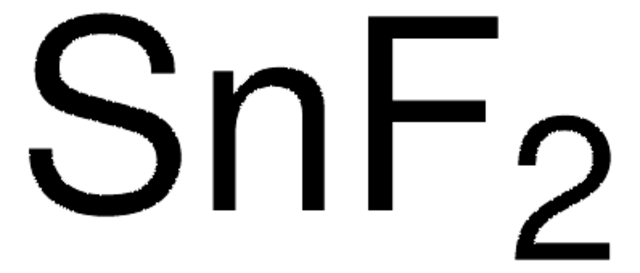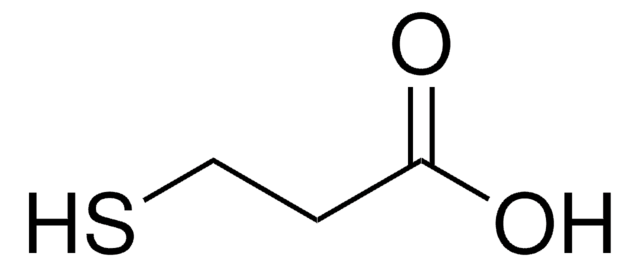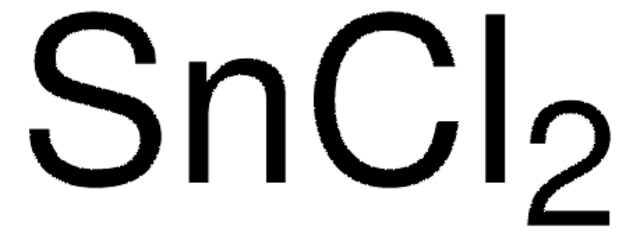409308
Tin(II) iodide
AnhydroBeads™, −10 mesh, 99.99% trace metals basis
Sinônimo(s):
Stannous iodide, Tin diiodide
About This Item
Produtos recomendados
grau
for synthesis
synthesis grade
Nível de qualidade
linha de produto
AnhydroBeads™
Ensaio
99.99% trace metals basis
Formulário
beads
Impurezas
≤150.0 ppm Trace Metal Analysis
tamanho de partícula
−10 mesh
p.e.
714 °C (lit.)
pf
320 °C (lit.)
densidade
5.28 g/mL at 25 °C (lit.)
cadeia de caracteres SMILES
I[SnH2]I
InChI
1S/2HI.Sn/h2*1H;/q;;+2/p-2
chave InChI
JTDNNCYXCFHBGG-UHFFFAOYSA-L
Procurando produtos similares? Visita Guia de comparação de produtos
Categorias relacionadas
Descrição geral
Aplicação
Características e benefícios
1) Reduced uptake rate of environmental moisture minimizes caking, dusting, and static buildup for repeated easy handling.
2) Higher crucible packing densities and lower volatility in high-temperature solid state procedures.
3) Easier pneumatic loading of salts to sample chambers due to less clogging issues associated with powdered salt counterparts.
Informações legais
acessório
Palavra indicadora
Danger
Frases de perigo
Declarações de precaução
Classificações de perigo
Acute Tox. 4 Inhalation - Acute Tox. 4 Oral - Eye Dam. 1 - Met. Corr. 1 - Skin Corr. 1B - Skin Sens. 1 - STOT RE 2 - STOT SE 3
Órgãos-alvo
Cardio-vascular system,hematopoietic system, Respiratory system
Código de classe de armazenamento
8A - Combustible corrosive hazardous materials
Classe de risco de água (WGK)
WGK 3
Ponto de fulgor (°F)
Not applicable
Ponto de fulgor (°C)
Not applicable
Equipamento de proteção individual
Eyeshields, Faceshields, Gloves, type P2 (EN 143) respirator cartridges
Escolha uma das versões mais recentes:
Já possui este produto?
Encontre a documentação dos produtos que você adquiriu recentemente na biblioteca de documentos.
Os clientes também visualizaram
Global Trade Item Number
| SKU | GTIN |
|---|---|
| 409308-25G | |
| 409308-5G | 4061831989182 |
Nossa equipe de cientistas tem experiência em todas as áreas de pesquisa, incluindo Life Sciences, ciência de materiais, síntese química, cromatografia, química analítica e muitas outras.
Entre em contato com a assistência técnica
















